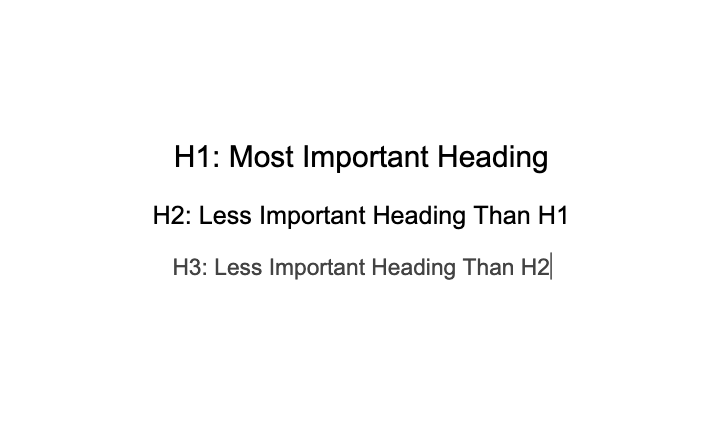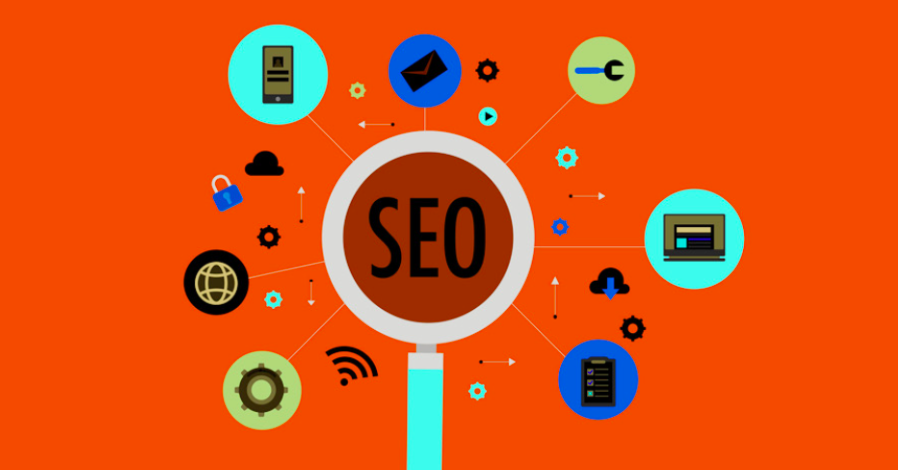The SEO Acronym: What Is Search Engine Optimization?
SEO Definition: Search engine optimization (SEO) is the process of improving the quality and quantity of website traffic to a website or a web page from search engines.
SEO is an abbreviation for search engine optimization. When you search for any question or phrase on Google, SEO is the reason that the very best results appear first in line for you to read.
Basically, it is the process of determining which websites rank first in the search results. The higher the ranking, the more clicks the post will get… Resulting in more traffic to the website that ranks.
Search engines are designed to give you the most accurate answers to your questions
Whether you’re looking for something as simple as the score of last night’s football game, or something as complex as data for your work project…
There are virtually no limits when it comes to what you can search for.
Common SEO Acronyms: What Do They Mean?
•SERP
Search engine results page. The SERPs are just a fancy way of referring to Google search results pages (or Bing, Yahoo, etc). When you search for something on Google, you will see different pages of search results, typically with hundreds of articles to choose from.
Search engine results pages can contain anywhere from 10-100 or more articles, depending on which search engine you’re using.
•SER
Search engine ranking. This is the position or ranking that a website holds on a search results page. The goal of all SEO practices is to rank number one in the search engine ranking.
•E-E-A-T
Experience, expertise, authoritativeness, trustworthiness. E-E-A-T is an SEO acronym that refers to the qualities Google uses to judge the credibility of a site. It’s no surprise why the Google algorithm doesn’t want sites without E-E-A-T qualities to rank.
•DR

Domain rating. According to Ahrefs, a domain rating “represents the strength of the website’s backlink profile on a logarithmic scale from 0 to 100…”
Generally speaking, the higher a website’s DR, the more high-quality backlinks it likely has. This is a term that is commonly used by the site Ahrefs.
•H1, H2, H3

Heading elements in HTML. Headings typically vary in size and have different levels of importance in an article.
Heading 1 is usually the largest size heading, while Heading 3 is the smallest. They can go up to H6, and in some cases, even higher than that.
•URL

Source: sitechecker.pro
Uniform resource locator. URL is basically the address of a web page. It’s a resource that specifies the location on a computer network, as well as the mechanism needed to retrieve it.
•YMYL
Your money or your life. Semrush says “YMYL topics could significantly impact readers’ health, financial stability, safety, or well-being.”
This is an SEO acronym that is a bit less popular, but still important for basic knowledge of search engine optimization.
•UR
URL rating. UR represents the strength of a backlink profile going to a specific page. This is also a term that is commonly utilized by Ahrefs.
•SEM
Search engine marketing. This term often refers to the use of paid advertisements to gain website traffic. Paid ads combined with SEO strategies can maximize your success with SEO.
•ROI
Return on investment. The return received after investing money, time, and/or effort.
In SEO, the term ROI is often used to describe things like money spent on ads, time spent on writing, etc. ROI is not only an SEO acronym, but a commonly used acronym for all businesses.
•GA

Source: sitechecker.pro
Google Analytics. This is a service provided by Google that contains basic analytical tools for SEO. It’s mostly used for tracking and reporting site traffic and other data.
•B2B
Business to business. This is a process where one business makes a transaction with another business.
•SaaS

Source: hubspot.com
Software as a service. SaaS is a software tool or service, typically given in exchange for money. SaaS products are often sold in subscription deals.
•CTR
Click-through rate. This is the number of people who click on an advertisement leading to a specific page. CTR is often a percentage.
•PPC
Pay per click. PPC advertising is the ads that show up on search results pages. PPC typically refers to the higher-ranking paid ads. PPC ads are a part of search engine marketing.
•GSC
Google search console. This is a web service created by Google that allows people to check for crawling errors, check their indexing status, different search queries, and also optimize their website’s visibility.
The Different Categories Of SEO
Source: nealschaffer.com
Organic Traffic
Organic traffic is the number of people who find web pages naturally, and not through paid advertising or sponsorship.
Organic traffic is often seen as the most valuable type of search traffic since the users are usually ready to make a purchase.
Paid Traffic
Traffic that is acquired through paid programs and paid advertisements.
Paid traffic tends to show much quicker results than organic traffic, however it is often expensive.
On Google and other search engines, paid articles will usually show up even before the number one organically ranking article.
Technical SEO
Technical SEO is the process of optimizing your site speed and other technical features for a search engine.
Making your website smartphone-friendly, having a good site structure, and updating your sitemap with Google can also be considered technical SEO.
Local SEO
Local SEO is optimizing your website to increase your traffic among local search results.
For example, if you own a coffee shop and want to attract more customers, local SEO would help you rank for things like “coffee shops near me”.
Local SEO can include things like ranking for local keywords and optimizing Google business profiles.
How SEO Impacts Your Business
SEO is something that has been quickly gaining popularity in the online world, and rightfully so… The value of ranking on Google or any other search engine is immensely high.
It is so valuable, that many of the largest companies in the world are pursuing high search engine rankings. Companies like Forbes, CNN and The New York Times all have specialized teams that have the sole intention of SEO.
Not only does ranking improve your company/brand awareness, but there are also multiple ways of monetizing the traffic that comes along with it.
Affiliate Income
Affiliate income is the process of producing income by selling other companies’ products and earning a commission.
Although the commission rates are typically only a small percentage, you can earn tons of money if your article ranks high in a search engine, since the traffic to your page will increase.
Ad Revenue
Ad revenue is income made by promoting other businesses on your website or platform.
Typically, the higher your website traffic is, the more income you can make. This is also something that SEO can significantly help increase.
Selling Products/Services
If your company sells any type of product or service, ranking high on search engine results pages can boost your sales. The high traffic will help attract more eyes to your page.
These leads are almost always willing to purchase your product since they were the ones searching for it in the first place.
Learning These SEO Acronyms Are Crucial
If you consider yourself to be a seasoned SEO professional, knowing these SEO acronyms is essential. There are perhaps hundreds of examples of SEO terms in the online world.
Whether you’re providing SEO services, working as an SEO specialist for a company, or anything of that nature… Knowing these terms is the basic foundation of having SEO knowledge.
Matt is an SEO specialist, blogger, and the founder of Matt’s World 101.
